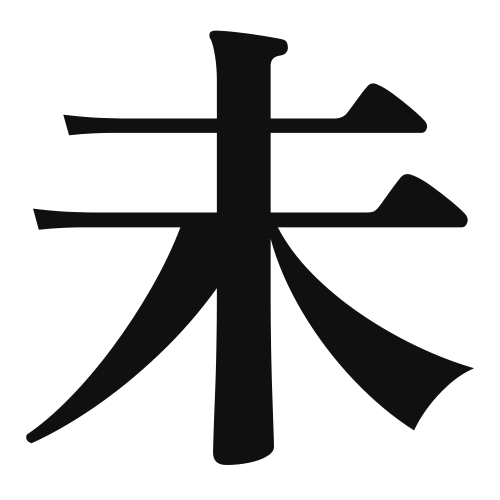1. Overview of Meaning
The kanji “未” (pronounced “mi” or “bi”) generally means “not yet” or “un-“. It signifies something that has not occurred or is still in the process of happening.
2. Formation and Radical
Formation of the Kanji: The kanji “未” is classified as a pictogram, representing a tree that has not yet grown fully. It conveys the idea of something that is incomplete or in its early stages.
Radical: The radical for “未” is also “未”, which is used in various kanji to indicate a sense of incompleteness or something that is yet to come.
3. Examples of Usage
Common Words and Phrases: Some frequently used words that include “未” are:
- 未成年 (miseinen) – minor, underage
- 未解決 (mikaiketsu) – unresolved
Example Sentences in Daily Conversation:
- この問題は未解決です。 (Kono mondai wa mikaiketsu desu.) – This issue is unresolved.
- 彼は未成年なので、飲酒できません。 (Kare wa miseinen nanode, inshu dekimasen.) – He is a minor, so he cannot drink alcohol.
4. Synonyms and Antonyms
Similar Kanji: A kanji with a similar meaning is “無” (mu), which means “nothing” or “without”. The difference is that “未” indicates something that has not yet happened, while “無” indicates the absence of something.
Antonyms: An antonym of “未” is “既” (ki), which means “already” or “previously”, indicating that something has been completed or has occurred.
5. Cultural and Historical Background
Relation to Japanese Culture: The kanji “未” is often used in contexts related to youth and potential, reflecting the Japanese cultural value placed on growth and development.
Proverbs and Idioms: One common expression is “未だ未だ” (imada mada), which means “not yet” or “still not”, emphasizing the ongoing nature of a situation.
